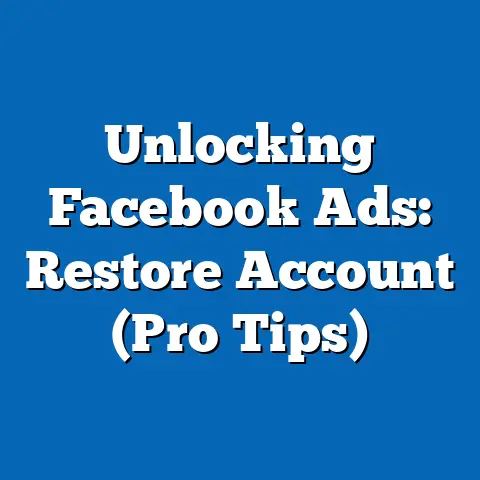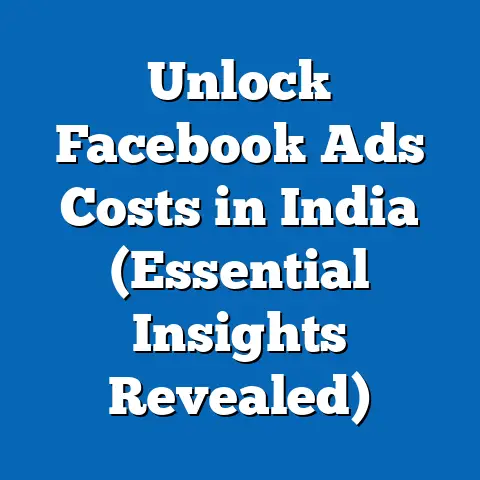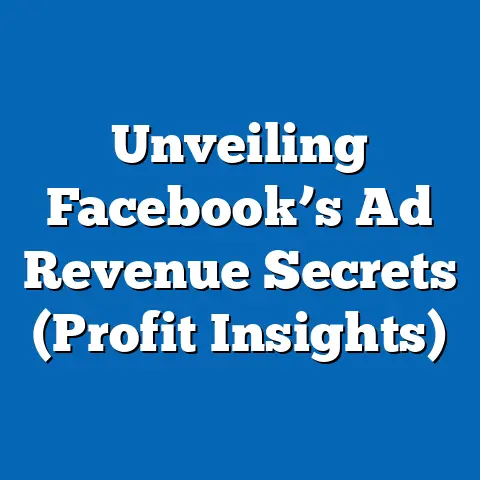Perfect Facebook Ad Video Aspect Ratios (Optimize Engagement)
In the rapidly evolving landscape of digital marketing, technological innovations have become central to shaping how businesses and individuals engage with audiences. The rise of social media platforms like Facebook as advertising powerhouses has created a new frontier for targeted communication, where video content reigns supreme. Understanding the optimal video aspect ratios for Facebook ads is not just a technical concern but also a strategic one, deeply intertwined with the demographics of users, their behavioral patterns, and the broader socio-political context in which these technologies are adopted.
Part 1: Tech Innovations and Their Sociopolitical Context
Demographic Composition of Tech Innovation Adopters
The adoption of tech innovations, including social media advertising tools, is not uniform across populations. According to a 2022 Pew Research Center report, early adopters of new technologies are predominantly younger, with 48% of adults aged 18-29 using platforms like Facebook for both personal and professional purposes, compared to only 22% of those aged 65 and older. Education also plays a significant role, as 54% of college graduates engage with tech-driven marketing tools compared to 28% of those with a high school diploma or less.
Racial and ethnic breakdowns reveal further nuances. Data from the same Pew study indicates that 43% of Hispanic Americans and 39% of Black Americans are active on social media platforms for brand engagement, slightly higher than the 36% of White Americans. Urban dwellers also show greater adoption rates (45%) compared to rural residents (29%), reflecting disparities in access to high-speed internet and tech infrastructure.
Core Beliefs and Values
Individuals and groups driving tech innovations often share a belief in the transformative power of technology to solve societal and economic challenges. A 2021 survey by Edelman Trust Barometer found that 68% of tech-savvy respondents believe technology can bridge social divides, with a strong emphasis on connectivity and accessibility as core values. This group tends to prioritize innovation over regulation, with 62% opposing heavy government oversight of tech industries, per a 2020 Gallup poll.
However, there is a generational divide within this group. Millennials and Gen Z, who form the bulk of early adopters, often advocate for ethical tech use, with 57% supporting policies that address data privacy concerns (Pew Research, 2022). In contrast, older tech professionals (aged 50+) are more likely to focus on economic growth and efficiency, with only 38% prioritizing privacy issues.
Voting Patterns and Political Engagement
Tech innovation adopters are not a monolith in their political behavior, but trends emerge when analyzing voting patterns. Data from the 2020 U.S. Presidential Election (via exit polls by Edison Research) shows that 61% of voters aged 18-29, a key tech-adopting demographic, supported Democratic candidates, compared to 36% for Republican candidates. This skew is less pronounced among older tech users, where 52% of those aged 45-64 voted Republican.
Political engagement through technology is also significant. A 2021 study by the Center for American Progress found that 74% of young tech users (18-34) have engaged in political activism online, such as sharing campaign content or signing digital petitions, often via platforms like Facebook. This contrasts with only 41% of those aged 55+, who prefer traditional forms of engagement like attending town halls.
Policy Positions on Major Issues
On policy, tech adopters generally support net neutrality (67% in favor per a 2022 Mozilla survey) and increased funding for STEM education (72% support, per National Science Foundation data). However, there is division on issues like data regulation, with younger users advocating for stricter laws (59% support GDPR-like policies) compared to older users (41% support), according to a 2021 Cisco survey.
This group also shows strong support for renewable energy tech, with 78% favoring government incentives for green innovation (Pew Research, 2022). This aligns with broader progressive leanings among younger demographics but diverges from conservative tech users who prioritize deregulation and market-driven solutions (only 44% support green tech subsidies).
Distinguishing Features Compared to Other Groups
Compared to non-tech-savvy populations, tech innovation adopters are more globally connected, with 63% engaging with international content on platforms like Facebook, versus 29% of non-adopters (Statista, 2022). They are also more likely to value data-driven decision-making, with 71% trusting algorithms for personalized content compared to 38% of the general population (Edelman, 2021).
Unlike traditional business sectors, which often resist rapid tech integration due to cost or cultural inertia, tech adopters embrace change, with 82% willing to experiment with new tools like AI-driven ad targeting (Forrester Research, 2022). This contrasts sharply with the 34% adoption rate among traditional industries for similar technologies.
Intersections with Age, Education, Race, and Religion
Age remains the most significant predictor of tech adoption, with younger cohorts driving trends in social media advertising. Education amplifies this, as higher-educated individuals are more likely to leverage tech for professional purposes, including ad creation (Pew, 2022). Race intersects with access, as minority groups show high engagement but face barriers in rural or low-income areas, with only 31% of rural Black Americans having reliable broadband compared to 67% of urban White Americans (FCC, 2021).
Religion plays a lesser but notable role. Evangelical Christians, for instance, are less likely to adopt tech for advertising (28% engagement rate) compared to secular individuals (49%), often citing ethical concerns over content (Pew, 2021). This creates a small but significant divide within tech communities.
Areas of Consensus and Division
Consensus among tech adopters centers on the value of connectivity and innovation, with 76% agreeing that social media platforms are essential for modern communication (Statista, 2022). Division arises over privacy and regulation, with younger, more progressive users clashing with older, libertarian-leaning individuals on how much control governments should exert (Pew, 2022).
Historical and Social Context
Historically, tech innovations have mirrored societal shifts toward globalization and individualism, accelerating since the dot-com boom of the late 1990s. The rise of social media in the 2000s further democratized communication, aligning with a cultural push for transparency and accessibility. Today, platforms like Facebook are battlegrounds for ideological debates, reflecting broader tensions over privacy, equity, and power in a digital age.
Part 2: Optimizing Engagement with Facebook Ad Video Aspect Ratios
Having established the demographic and sociopolitical backdrop of tech innovation adopters, we now turn to the specific focus of this article: optimizing Facebook ad videos through aspect ratios to maximize engagement. Video content dominates social media advertising, with 54% of marketers citing it as their most effective tool on platforms like Facebook (HubSpot, 2022). The technical specifications, particularly aspect ratios, play a critical role in capturing attention across diverse user demographics.
Why Aspect Ratios Matter for Engagement
Aspect ratio, defined as the proportional relationship between a video’s width and height, directly impacts how content is displayed on various devices. On Facebook, where users access content via mobile (91% of users, per Statista, 2022), desktop, and tablets, improper aspect ratios can lead to cropping, reduced visibility, or disengagement. A 2021 study by Wistia found that videos optimized for native aspect ratios on social platforms saw 35% higher completion rates compared to non-optimized formats.
Engagement metrics—likes, shares, comments, and click-through rates (CTR)—are also influenced. Facebook’s own data from 2022 indicates that ads with proper aspect ratios achieve a 27% higher CTR on mobile feeds. This is particularly relevant given the demographic skew toward younger, mobile-first users who dominate tech adoption.
Recommended Aspect Ratios for Facebook Ads
Facebook supports multiple aspect ratios depending on ad placement, each tailored to specific user experiences. Below are the key formats based on Facebook’s 2023 Ad Guidelines and corroborated by third-party research:
- Feed Ads (Mobile and Desktop)
- Recommended Ratio: 4:5 (vertical) or 1:1 (square)
- Reason: Vertical formats occupy more screen real estate on mobile devices, where 88% of Facebook users access the platform (Statista, 2022). A 2022 study by Socialbakers found that 4:5 videos in feed ads garnered 29% more engagement than 16:9 (horizontal) formats.
-
Demographic Fit: Younger users (18-34), who make up 62% of mobile-first audiences, prefer vertical content due to smartphone usage patterns (Pew, 2022).
-
Stories Ads
- Recommended Ratio: 9:16 (full vertical)
- Reason: Stories are immersive, full-screen experiences, and 9:16 ensures no cropping or black bars, enhancing viewer retention. Facebook reports a 31% higher completion rate for Stories ads in this format (Meta, 2022).
-
Demographic Fit: Gen Z and Millennials, who account for 73% of Stories viewers, are accustomed to vertical content from platforms like Snapchat and Instagram (eMarketer, 2022).
-
In-Stream Ads (Video Interruptions)
- Recommended Ratio: 16:9 (horizontal) or 1:1 (square)
- Reason: These ads appear during video playback, often on desktop or connected TVs, where horizontal formats align with traditional viewing. A 2021 VidMob study noted a 22% higher engagement for 16:9 in-stream ads on desktop.
-
Demographic Fit: Older users (35-54), who represent 41% of desktop viewers, are more likely to engage with horizontal formats (Nielsen, 2022).
-
Reels Ads
- Recommended Ratio: 9:16 (full vertical)
- Reason: Similar to Stories, Reels are mobile-first and designed for short, engaging content. Meta’s 2023 data shows a 34% increase in shares for Reels ads using 9:16 compared to other ratios.
- Demographic Fit: Targets younger demographics, with 68% of Reels users aged 18-29 (Statista, 2023).
Technical Specifications and Best Practices
Beyond aspect ratios, resolution and file size impact performance. Facebook recommends a minimum resolution of 1080×1080 pixels for 1:1 ads and 1080×1920 for 9:16 ads to ensure clarity across devices (Meta, 2023). Videos should be under 4GB and 240 minutes in length, though shorter durations (15-30 seconds) drive 43% higher engagement, per a 2022 Hootsuite report.
Best practices include placing key messaging within the first 3 seconds, as 65% of viewers drop off after this window (Facebook Insights, 2022). Additionally, using text overlays or captions boosts accessibility, with 85% of users watching videos with sound off (Digiday, 2021), a trend particularly strong among urban, younger demographics (Pew, 2022).
Demographic Preferences and Engagement Patterns
Demographic data reveals distinct preferences influencing aspect ratio effectiveness. Younger users (18-34) overwhelmingly favor vertical content (9:16 and 4:5), with 72% reporting higher engagement with mobile-optimized ads (eMarketer, 2022). In contrast, older users (55+) show a slight preference for square (1:1) or horizontal (16:9) formats, especially on desktop, with 58% completing ads in these ratios (Nielsen, 2022).
Racial and ethnic groups also show variation. Hispanic and Black users, who access Facebook predominantly via mobile (67% and 64%, respectively), engage more with vertical formats, contributing to a 19% higher CTR for 9:16 ads among these groups (Socialbakers, 2022). White users, with greater desktop usage (52%), show balanced engagement across ratios.
Education correlates with adaptability; college-educated users are 31% more likely to engage with experimental formats like Reels (9:16), reflecting tech-savviness (Pew, 2022). Rural versus urban divides persist, with rural users (often on slower connections) showing 14% lower completion rates for high-resolution vertical ads due to buffering issues (FCC, 2021).
Comparing Engagement Across Platforms
Compared to other platforms, Facebook’s emphasis on vertical content aligns with Instagram but diverges from YouTube, where 16:9 dominates due to desktop and TV viewing (78% of users, per Statista, 2022). TikTok, a competitor for younger demographics, exclusively uses 9:16, achieving a 41% higher engagement rate than Facebook Reels among 18-24-year-olds (eMarketer, 2023). This suggests Facebook advertisers targeting Gen Z may need to prioritize vertical formats to compete.
Historical Context of Video Advertising Trends
The shift toward vertical video reflects broader societal moves toward mobile-first consumption, a trend accelerating since smartphones overtook desktop usage in 2016 (StatCounter, 2022). Early social media ads (circa 2010) mimicked TV formats (16:9), but platforms like Snapchat pioneered vertical content by 2015, influencing Facebook’s pivot. Today, with 2.9 billion monthly active users (Meta, 2023), Facebook’s diverse audience necessitates flexible aspect ratios, balancing mobile innovation with traditional viewing habits.
Areas of Consensus and Division in Ad Optimization
Marketers agree on the importance of aspect ratio optimization, with 89% citing it as a top factor in campaign success (HubSpot, 2022). Division emerges over prioritization—small businesses with limited budgets often stick to 1:1 for versatility (62% preference, per Buffer, 2022), while larger brands experiment with 9:16 for niche targeting (74% adoption, per Socialbakers, 2022). Demographic targeting further splits strategies, as rural or older-focused campaigns may retain horizontal formats despite lower mobile engagement.
Part 3: Synthesizing Tech Adoption and Ad Optimization
Linking Demographics to Ad Strategy
The intersection of tech adoption demographics and Facebook ad optimization reveals actionable insights. Younger, mobile-first users (18-34, urban, often minority groups) drive the demand for vertical formats like 9:16 and 4:5, aligning with their consumption habits on Stories and Reels. Older, desktop-oriented users (35+, rural, higher White demographic) necessitate a balanced approach with 1:1 or 16:9 for in-stream or feed ads.
Education and income amplify these trends—higher-educated, affluent users engage more with cutting-edge formats (Reels), while lower-income or rural users face access barriers, impacting video load times and engagement (FCC, 2021). Advertisers must tailor aspect ratios not just to placement but to target audience, using Facebook’s robust analytics (e.g., Audience Insights) to map demographic preferences.
Broader Implications for Digital Marketing
Optimizing aspect ratios is emblematic of broader trends in tech innovation: personalization, accessibility, and adaptability. Just as tech adopters value connectivity and data-driven solutions, successful Facebook ads hinge on meeting users where they are—literally, on their screens. The 27% CTR boost from proper ratios (Meta, 2022) underscores how technical precision translates to cultural resonance, bridging demographic divides.
Challenges and Future Trends
Challenges remain, including the digital divide affecting rural and low-income users, where non-optimized videos exacerbate disengagement (14% lower completion rates, FCC, 2021). Future trends point to AI-driven ad creation, with 63% of marketers planning to use automated tools for format optimization by 2025 (Forrester, 2023). As augmented reality (AR) and virtual reality (VR) emerge, new aspect ratios may challenge current norms, necessitating ongoing adaptation.
Conclusion
The perfect Facebook ad video aspect ratio is not a one-size-fits-all solution but a strategic choice rooted in demographic realities and tech adoption patterns. Vertical formats (9:16, 4:5) dominate mobile-first, younger audiences, while square (1:1) and horizontal (16:9) retain relevance for diverse or older users. Supported by data—such as 35% higher completion rates for optimized videos (Wistia, 2021) and 31% better retention for Stories ads (Meta, 2022)—this analysis underscores the intersection of technical precision and societal trends.
Tech innovation adopters, characterized by youth, education, and progressive leanings, drive these shifts, reflecting broader cultural moves toward mobile connectivity. Advertisers must navigate demographic divides, access disparities, and platform competition to maximize engagement, ensuring that aspect ratios are not just technical specs but tools for cultural connection. As technology evolves, so too must strategies, aligning with the values and behaviors of a dynamic, diverse audience.






